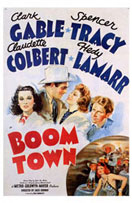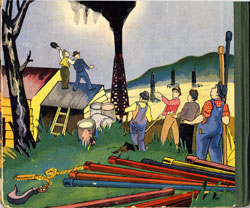|
Colonel Drake drilled the first successful oil well around the end of the Civil War. The success of Edison's light bulb drastically reduced the nation's demand for lamp oil, which rendered petroleum practically worthless. Once Henry Ford's automobile gained popularity, a new demand for oil arose, gasoline.
|
|
Boomtown Movie Poster |
Spindletop |
Corsicana was the site of the first oil production in Texas, but Nacogdoches can claim the first commercially successful field. Spindletop produced the first gusher, and the resulting overproduction gave the industry its first bust. Within a few years oil prices recovered, and the Red River uplift was discovered. Centered in Burkburnett, this play ushered in the North Texas oil boom, which was bolstered by subsequential discoveries to the South (Desdemona, Breckenridge and Ranger), as far west as New Mexico, north beyond Tulsa and east through Arkansas and Louisiana. The great elephant of the North American discoveries was the East Texas field.
This risky new business was defined by its booms and busts and was tailor made for the skill and nerve of the frontier gamblers who knew when to hold 'em and when to fold 'em. Their "hole card" was the information found with the drill bit. Their constant quest was for a stake; wildcatting was a capital intensive game.
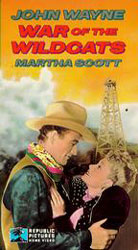
Two legendary characters of the game, "Dad" Joiner and Doc Lloyd made up for their advanced age and weight with courtly manners and flowery poetry. Like the promoter in Broadway's hit play "The Producers," they charmed quite a number of elderly women into investing in their ventures. Their great discovery well was named The Daisy Bradford, and she was a gusher but Joiner had sold over a thousand percent of the venture. Soon a room full of Dad's investors angrily demanded their money or his hide. A judge intervened and said, "When a man brings in a baby, he is allowed to rock it for a while."
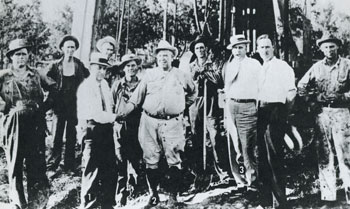
H.L. Hunt, a rich, handsome, and young Arkansas poker player, (cigar smoker, third from the right) tied up the local title companies, dominating leasing while he contracted the facilities necessary for the transportation to the refineries. He gave Joiner a million dollars for his interests and persuaded Dad's investors to settle for a proportional fraction of their interests, keeping the matter out of the court and allowing them all to make money. Wildcatter to the end, Joiner blew the million searching for a new field in West Texas.
Unlike Texas' first great oil field, Spindletop's little salt dome, whose riches produced Texaco and Gulf, the East Texas field covered hundreds of square miles owned by thousands of small farmers who benefited financially. Though Hunt was the big winner in the play, lots of other small companies and independents joined in the development, including my grandfather.
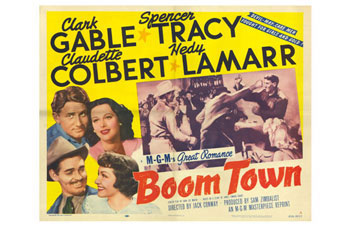
The East Texas Boom went on for years, and once Texas Ranger Lone Wolf Gonzaullas tamed the region, city wives brought their families to join their husbands in camp, like pioneer days before. I have a treasured copy of Michael T. Halbouty's, The Last Boom, which was given to me by my grandmother. She noted in the margin next to a description of the tent community near Kilgore that she had the only tent with a floor, including the Hunts'. More boomtown |
